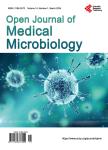Epidemiology of <i>Staphylococcus aureus</i>Infections in Kenya: Current State, Gaps and Opportunities
Epidemiology of <i>Staphylococcus aureus</i>Infections in Kenya: Current State, Gaps and Opportunities作者机构:Department of Pathology Aga Khan University Nairobi Kenya Department of Biomedical Sciences and Technology The Technical University of Kenya Nairobi Kenya Pan-African University-Institute of Science Technology and Innovation/Jomo Kenyatta University of Agriculture and Technology Nairobi Kenya Department of Biomedical Sciences Stellenbosch University Stellenbosch South Africa
出 版 物:《Open Journal of Medical Microbiology》 (医学微生物学(英文))
年 卷 期:2020年第10卷第4期
页 面:204-221页
学科分类:100208[医学-临床检验诊断学] 1002[医学-临床医学] 10[医学]
主 题:Staphylococcus aureus MRSA AMR Epidemiology Kenya
摘 要:Staphylococcus aureus has maintained its clinical relevance as a major cause of hospital and community acquired infections globally with a high burden of antimicrobial resistance (AMR). Though reported, the burden of infection, antimicrobial resistance and molecular epidemiology of S. aureus are not well defined in Kenya. This descriptive review evaluated reported data on the detection and characterization of S. aureus infections in Kenya. Published data between 2000 and 2020 were evaluated. S. aureus isolation frequencies varied from 1% in blood specimens to 52.6% among skin and soft tissues infections while MRSA rates ranged from 1% to 84.1%. While penicillin resistance has consistently been high, last line and recent antibiotics such as vancomycin, linezolid, teicoplanin and daptomycin have retained their efficacy. Data on MRSA carriage in the community, among HCWs and inpatients is limited. Global clones (CC1, CC5, CC8, CC22, CC30, CC45 and CC239) alongside a few novel MRSA strains have been reported with staphylococcal protein A (spa) sequence based clustering yielding four major clusters (spaspan style=font-family:Verdan



